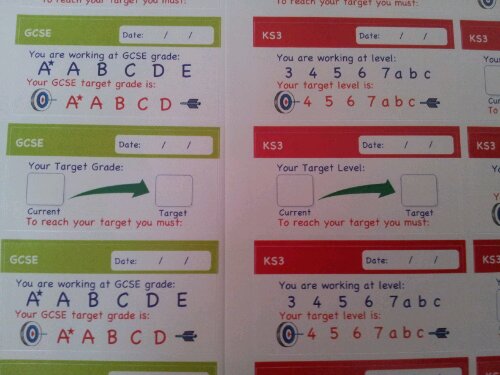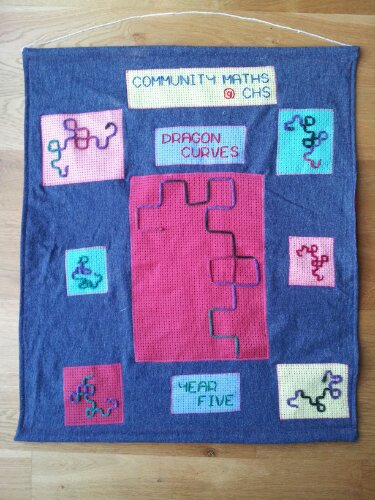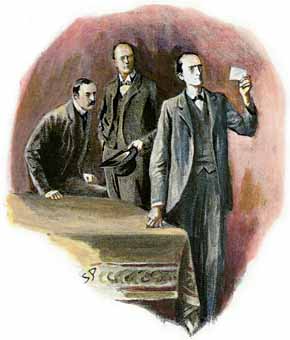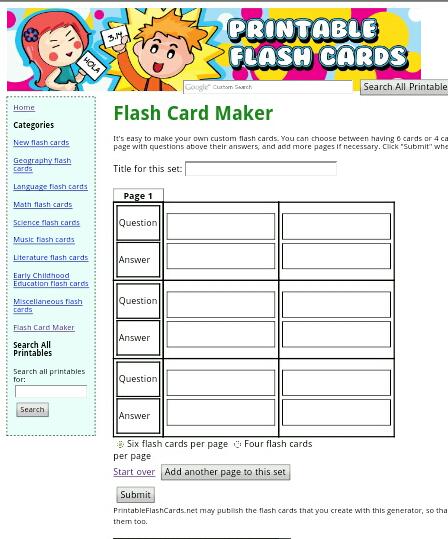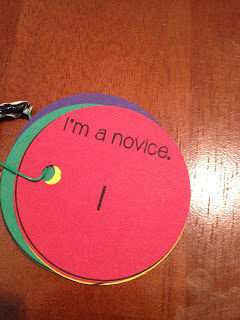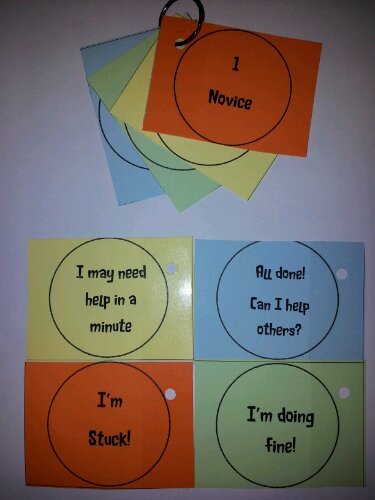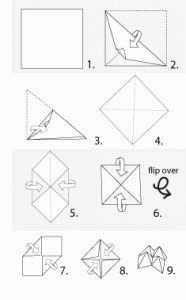I get just a tad frustrated when I spend time in lessons discussing targets and getting pupils to write them somewhere safe, only for the same pupils to tell SLT, when they drop in, that they don’t know what their targets are!
So I’ve re-found these stickers which we had in school a couple of years ago, but lapsed in using.
I bought these ‘GCSE Assessment stickers’ and ‘KS3 Assessment stickers’ from School Stickers on Amazon UK for £1.96 per pack. I’ve already started using them and my classes seem receptive to brightly coloured targets.

